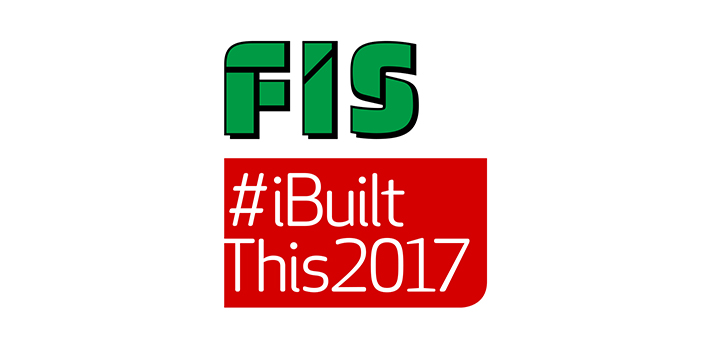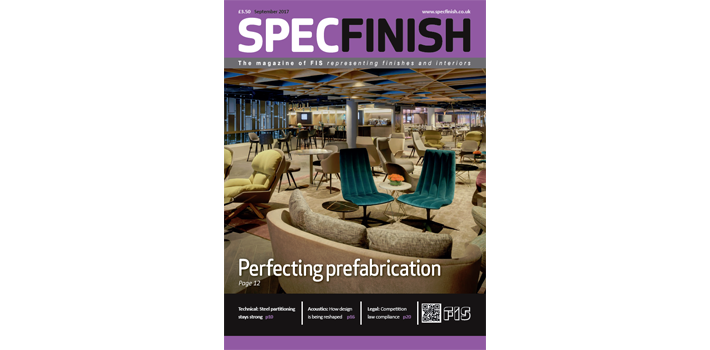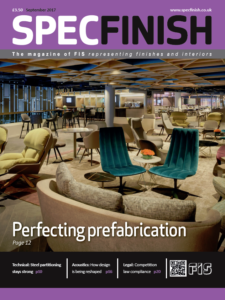
by Nicky Smith | Sep 5, 2017 | Main News Feed
The #iBuiltThis2017 competition is open for entries until midnight on Wednesday 27 September. FIS Skills has launched its image-led campaign to attract young people and promote the construction industry as a career choice. There are fabulous prizes on offer for each of the three age categories:
Age Group 19 and over
St Pancras Renaissance Hotel and The London Eye Champagne Experience
Age Group 14-18*
Chessington World of Adventures and overnight stay at the Safari Hotel
Age Group 13 and under*
Family package to LEGOLAND Windsor and an overnight stay at the LEGOLAND Castle based on a family of 4
The Judging Panel has a stellar line-up and includes Amanda Clack, RICS President and Mark Farmer, author of the October 2016 UK Government Review ‘Modernise or Die’.
The competition will run for a period of three weeks, from 4 September. Winners will be announced at UK Construction Week which takes place from 10 to 12 October 2017 at the NEC in Birmingham.
For details on how to enter the competition, there is a step-by-step guide here. To find out more and enter, click here.
*Under 18’s will require prior parental/guardian consent to enter the competition.

by Nicky Smith | Sep 4, 2017 | Main News Feed
A summary of August’s data from the IHS Markit/CIPS UK Construction PMI® revealed the weakest upturn in UK construction output for 12 months.
Other key findings include:
-
- Marginal increase in overall construction activity
- Robust rise in house building offset by marked fall in commercial work
- New business declines for the second month running
To view the full report, click here.

by Nicky Smith | Aug 31, 2017 | Main News Feed
During August, we welcomed five new companies to the FIS membership. As Contractor Members, the three companies are SEC Interiors Ltd, Sussex and Surrey Partitioning Ltd and TimK Construction Ltd.
As Supplier Members, the companies are Safety Signs & Supplies and William Smith Group. We look forward to a long and successful relationship with our new and existing members.

by Nicky Smith | Aug 31, 2017 | Main News Feed
 In the September edition of SpecFinish, Paul Thompson looks at the industry’s shift towards off-site fabrication.
In the September edition of SpecFinish, Paul Thompson looks at the industry’s shift towards off-site fabrication.
The launch of FIS Skills’ #iBuiltThis2017 is featured on page 18. Find out how you can enter the competition to be in with a chance of winning a fabulous prize!
In the technical article, Joe Cilia looks at steel partitioning and why sales are growing.
Read more in the September edition of SpecFinish online here or the PDF version here.

by Nicky Smith | Aug 25, 2017 | Main News Feed
FIS Skills launches its flagship social media competition ‘I Built This’ today. As an image-led campaign, utilising the Instagram and Twitter platforms, it is designed to attract young people, those who work in the construction industry and the general public. By submitting photographs of something that they have built, using the hashtag #iBuiltThis2017 the aim is to promote the UK built environment in a fun and inspiring way.
The competition will run for a period of three weeks, with submissions being accepted from 4 September. Winners will be announced at UK Construction Week which takes place from 10 to 12 October 2017 at the NEC in Birmingham.
FIS Skills Delivery Director Helen Yeulet said: “This is a part of FIS Skills’ ongoing vision to drive change and a better understanding of the industry and the opportunities within it. The competition aims to utilise the pride in an individual’s achievements to assist in improving perceptions and image, increase careers awareness and engagement nationally.”
Chief executive David Frise added: “The only way to close the skills gap and improve industry perceptions is through strong collaboration and working together. This campaign provides the partnerships to join the dots across the industry with educators and potential new entrants and engage with young people in a fun and exciting new way.”
Read the Press Release

by Nicky Smith | Aug 10, 2017 | Main News Feed
Assembling buildings as a single, integrated system
by David Frise
For a building to be a ‘product’, you have to start the process off correctly by designing it before you start. Not rocket science, but rarely achievable in the “crack on” world of construction. Most projects start on-site far too early and well before the design is fully completed. This means that we end up not in design and build mode, but in the folly of build and design. A harum-scarum process that is desperately inefficient and leads to massive additional costs. The Get it Right Initiative estimates anywhere between 10-24% of cost stems from avoidable error, more than the total profits of all the construction industry put together. It is no wonder construction is high risk and low margin and why so many Chief Executives of major contractors have short term periods in charge.
It often appears that the building is a secondary requirement. We all invest in property, either personally or through our pensions. An investment vehicle requires less focus on specification and more on the need to be on time and on budget, to generate that return on investment. Of course, the best clients recognise that this does not pay in the long term, but there are many that do not.
This drives inefficient behaviours down the supply chain because, if you are not concerned about the quality of the product, you will not need to be concerned about the people who install it. This leads to you also not needing to worry about paying them on time. So poor payment practices are rife as a result.
The current system needs on-site activity to trigger payments down the supply chain, so we all want to see deliveries of materials and site progress to improve our cash flow. The result is cluttered sites and out of sequence works to make progress look better than it is (nothing makes a room look near to completion like a ceiling, even if the services above it are yet to be installed). This also leads to late design changes, reworking and yet more increased defects.
Build and design delivers broken buildings, while the process of delivering them causes broken people. The most likely way you will die in construction is suicide. The pressures of working in the industry, especially as a specialist contractor, are enormous as you chase slim margins and impossible programmes and if your house is on the line, this often becomes unbearable.
It doesn’t have to be this way
Planning departments could give planning consent but not allow a start on site until the design had been completed or perhaps a Regulation 38 Fire Plan signed off by Building Control. This would prevent the immediate start of build and design. The freeholder would pay a professional to sign off the design so there would be no additional workload on planning departments.
Of course, if the developer used BIM this process would be easier to complete. You would also encourage the use of DFMA and off-site techniques that would improve efficiency and improve safety, as fewer workers would be required on site. The same could be said for reductions in waste.
Imagine a world where buildings were assembled quickly on-site, causing less disruption to local residents and businesses and at a lower cost; buildings that not only looked like the planning application but performed to the correct standards and were defect free. This would surely be a more profitable industry that attracts the brightest and the best. We might even address our “image” problem.
We would like to acknowledge Building Engineering Services Association (BESA) in allowing FIS to reproduce David Frise’s article.





 In the September edition of SpecFinish, Paul Thompson looks at the industry’s shift towards off-site fabrication.
In the September edition of SpecFinish, Paul Thompson looks at the industry’s shift towards off-site fabrication.